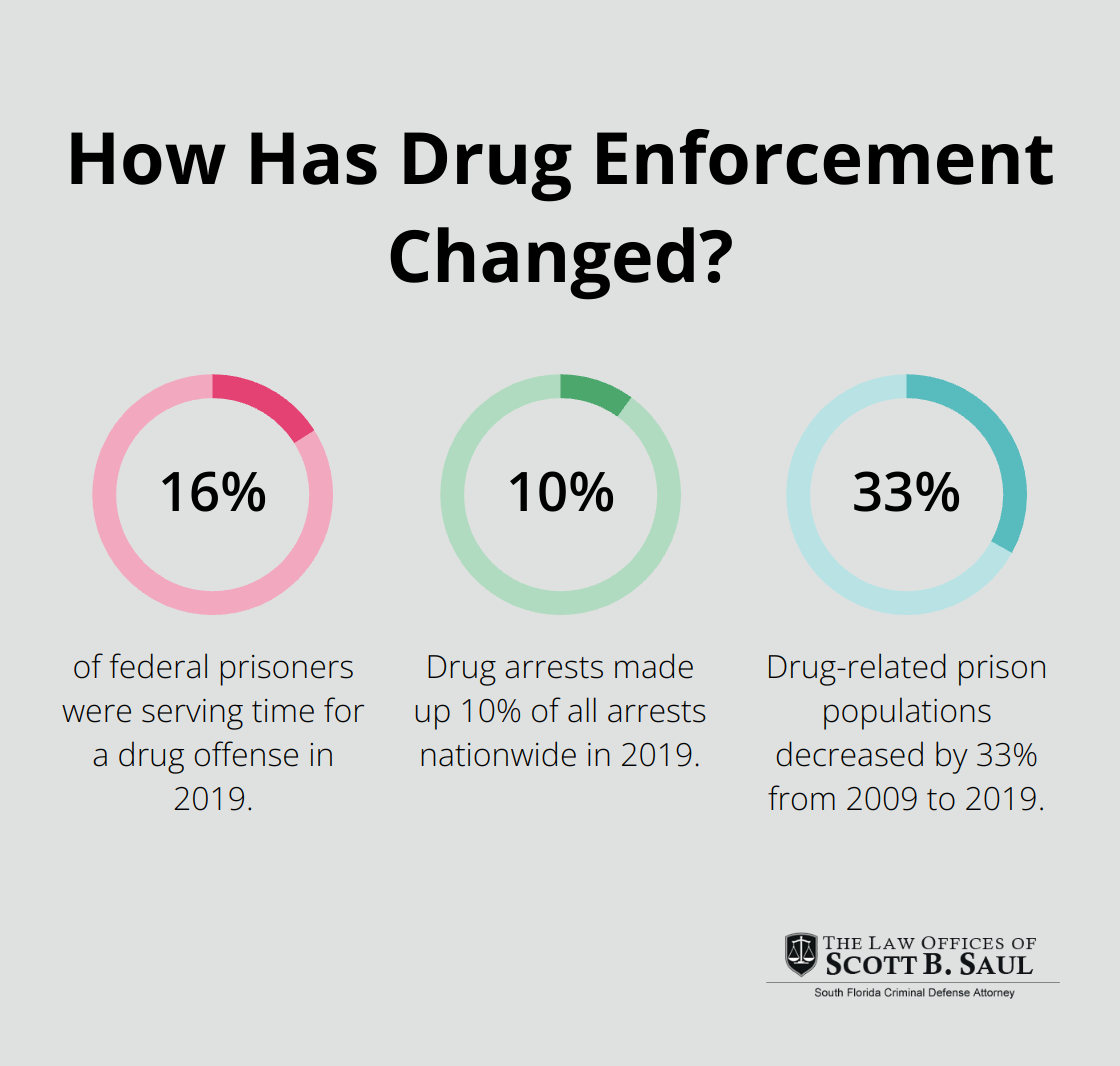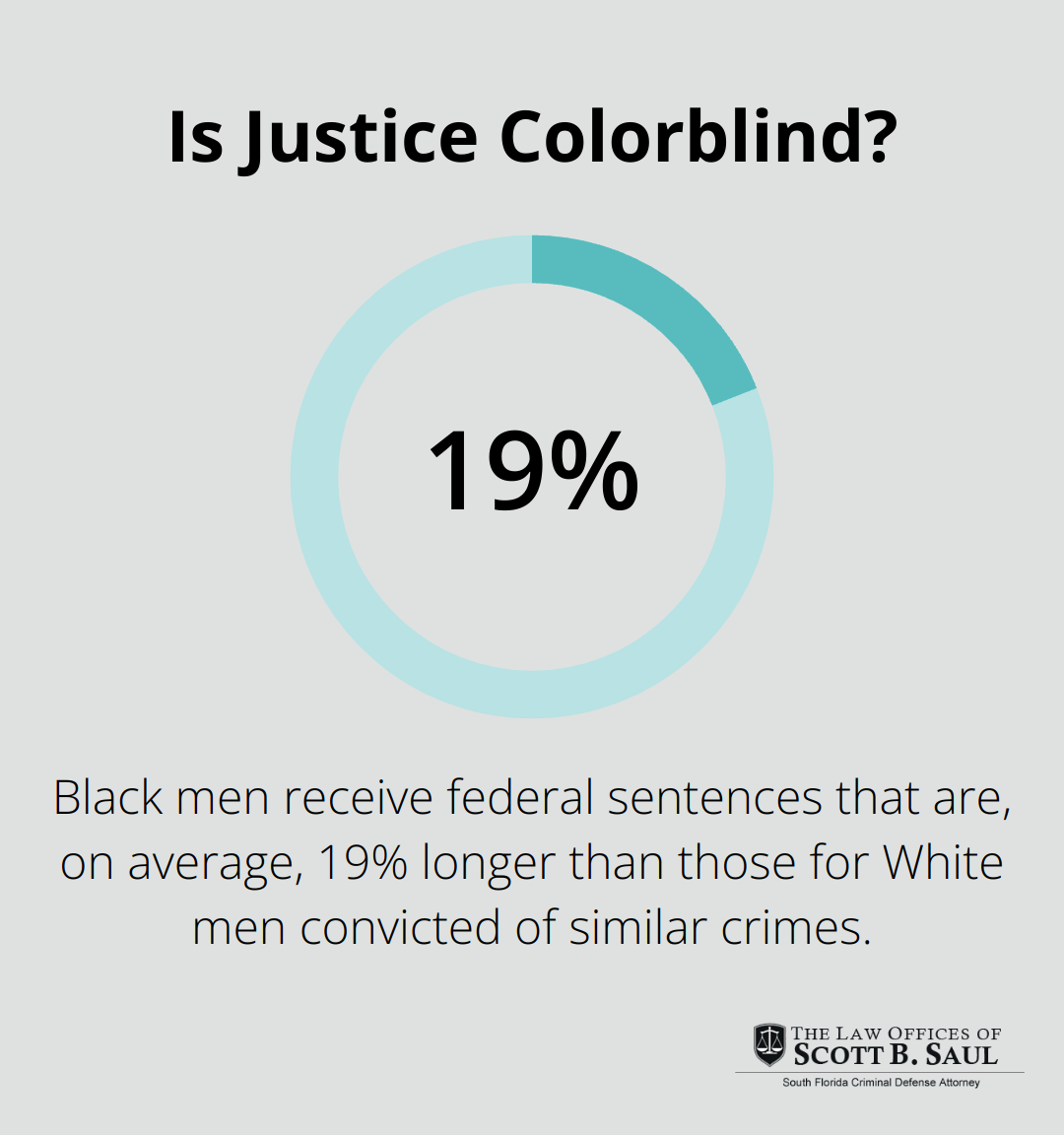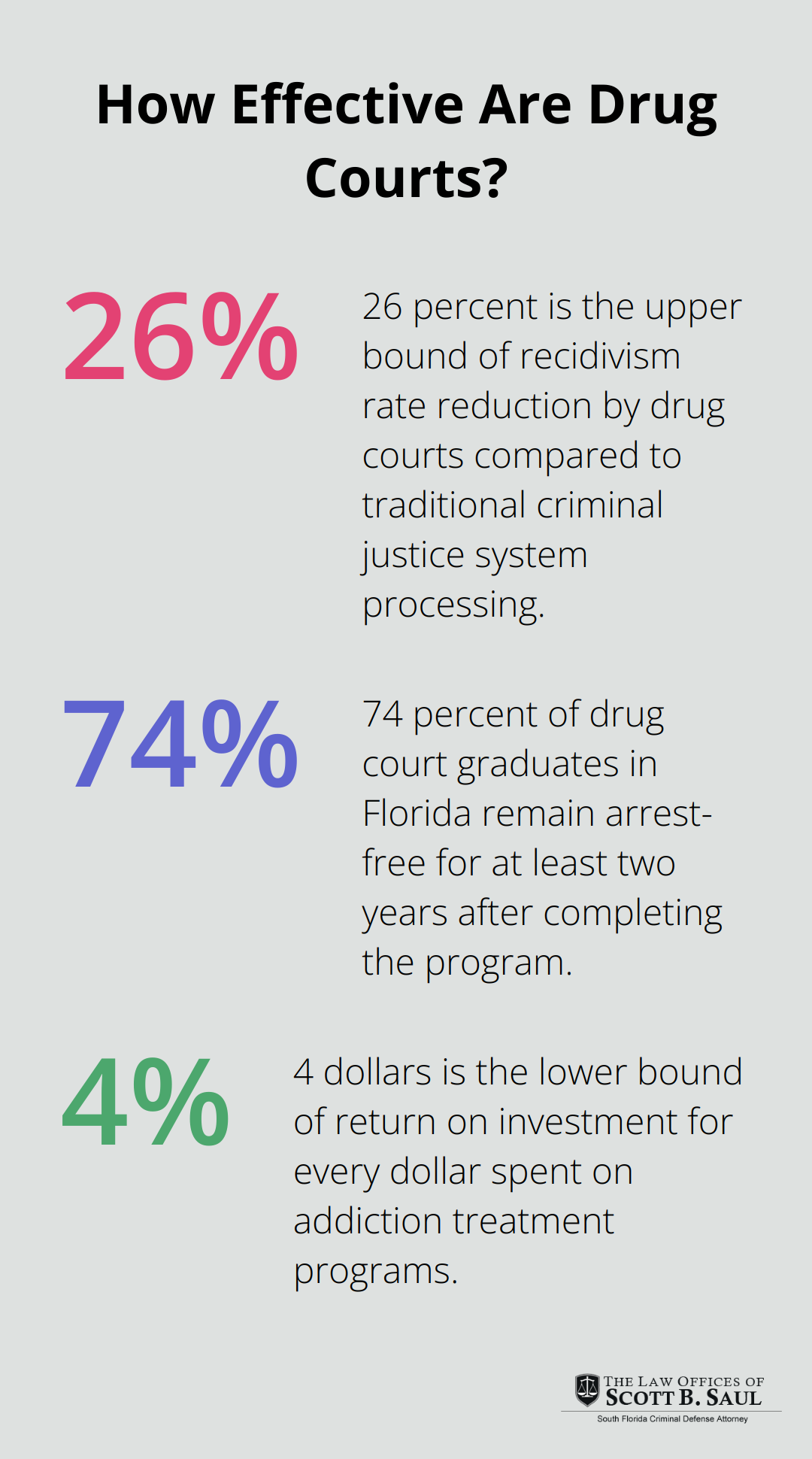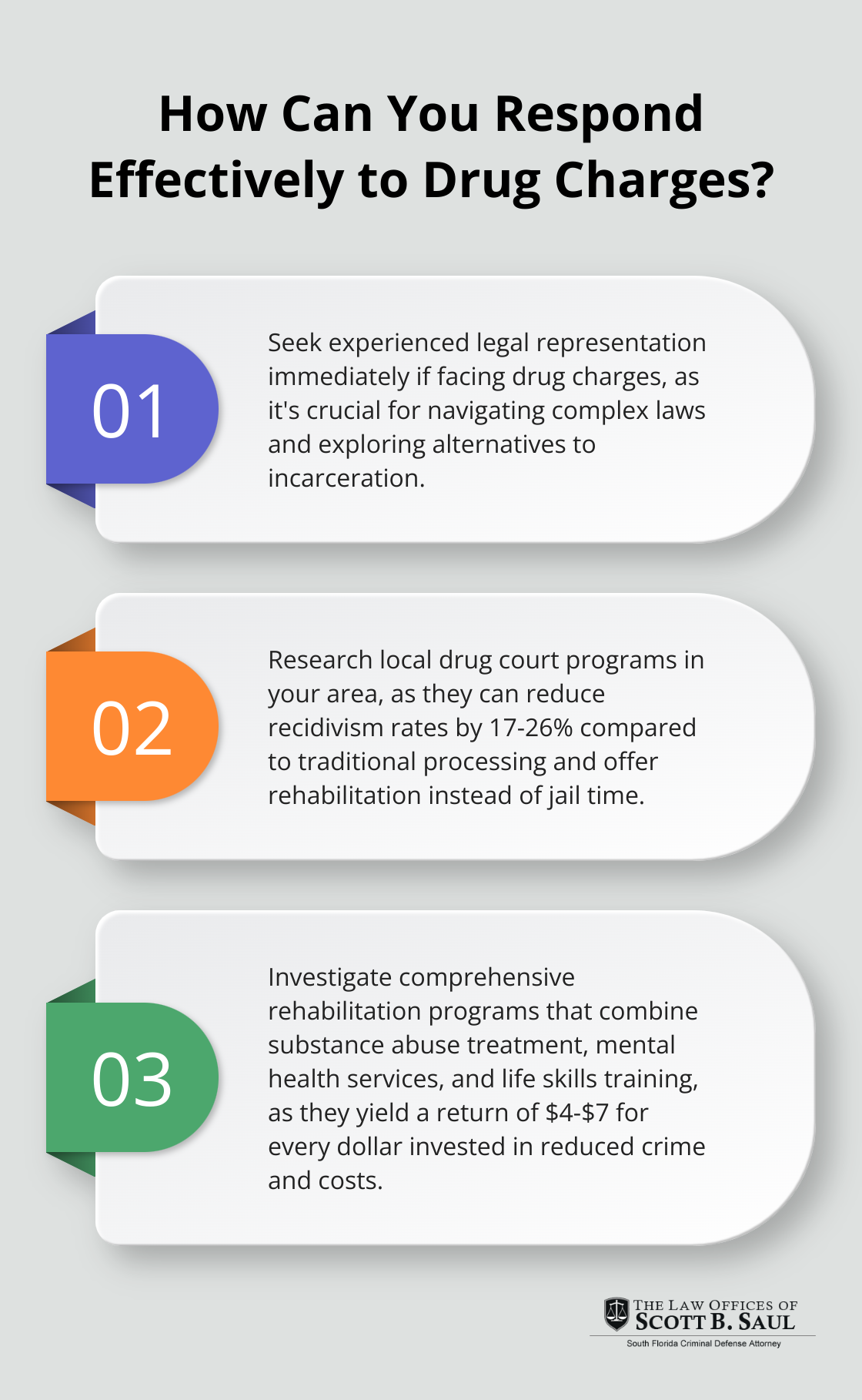US Incarceration Rates for Drug Offenses Explained
By : saulcrim | Category : Criminal Defense | Comments Off on US Incarceration Rates for Drug Offenses Explained
15th Dec 2024

The US incarceration rate for drug offenses remains a pressing issue in our criminal justice system. At Law Offices of Scott B. Saul, we’ve seen firsthand the impact of these laws on individuals and communities.
This blog post examines current statistics, analyzes the effects of drug policies, and explores alternatives to imprisonment. Understanding these complex issues is essential for anyone facing drug-related charges or interested in criminal justice reform.
How Many People Are Incarcerated for Drug Offenses?
The Scale of Drug-Related Incarceration
The United States holds the top position for incarceration rates globally, with drug offenses contributing significantly to this statistic. As of 2019, 16% of federal prisoners were serving time for a drug offense (99% for drug trafficking), and 8% were serving time for a violent offense. This number represents a substantial portion of the total prison population, underscoring the profound impact of drug laws on the criminal justice system.
Drug Offenses vs. Other Crimes
The comparison between drug-related incarcerations and other types of offenses reveals striking numbers. Drug offenses account for a significant portion of the federal prison population, surpassing violent crimes. In state prisons, while violent offenses constitute the majority, drug-related convictions still represent a significant percentage. The FBI reported that in 2019, drug arrests made up 10% of all arrests nationwide, totaling over 1.5 million.
Shifts in Drug-Related Incarceration Trends
The past decade has witnessed notable changes in drug-related incarceration trends. From 2009 to 2019, drug-related prison populations decreased by 33%. However, this decline doesn’t paint the complete picture. Despite the overall decrease, certain drug offenses saw increases. For instance, arrests for methamphetamine possession rose by approximately 240,400 during this period.
Persistent Racial Disparities
One of the most troubling aspects of drug-related incarceration is the persistent racial disparity. In 2019, across all three counties studied, Black people were admitted to jail at a rate between two and six times that of White or Hispanic people. This disparity highlights the need for a critical examination of drug enforcement practices and their impact on different communities.
The Role of Legal Representation
The complexity of drug laws and their enforcement makes it essential for individuals facing charges to seek experienced legal representation. Understanding these statistics and trends serves as the first step in navigating the legal system effectively and working towards fair outcomes in drug-related cases.

As we move forward, it’s important to examine the specific drug laws and policies that have shaped these incarceration rates. The next section will analyze the impact of mandatory minimum sentences and the “War on Drugs” on our current incarceration landscape.
How Drug Laws Shape Incarceration Rates
Drug laws in the United States profoundly impact incarceration rates, creating a complex and often controversial legal landscape. This chapter examines the key factors that contribute to high incarceration rates for drug offenses.
The Impact of Mandatory Minimum Sentences
Mandatory minimum sentences, introduced in the 1980s, significantly contribute to high incarceration rates for drug offenses. These laws require judges to impose a minimum prison term for certain crimes, regardless of individual circumstances. Under the law, mandatory minimum sentences double from five to 10 years-and from 10 years to 20-for second offenses. For drug offenses, this often results in lengthy sentences even for low-level, non-violent offenders.

The Anti-Drug Abuse Act of 1986 exemplifies the harsh nature of these laws. It established a 100-to-1 sentencing disparity between crack and powder cocaine, leading to disproportionately severe sentences for crack cocaine offenses (which predominantly affected Black communities). Although the Fair Sentencing Act of 2010 reduced this disparity to 18-to-1, the impact of these laws continues to reverberate through the justice system.
Consequences of the War on Drugs
The War on Drugs, initiated in the 1970s, has left an indelible mark on incarceration rates. This policy shift led to increased drug arrests, stricter sentencing, and a focus on punishment rather than rehabilitation. As a result, the U.S. prison population exploded, with drug offenders constituting a significant portion of those incarcerated.
The Bureau of Justice Statistics reports that the number of people incarcerated for drug offenses in state prisons increased from about 19,000 in 1980 to 237,000 by 2010. This surge in incarceration has not only affected individuals but entire communities, particularly low-income and minority neighborhoods.
Racial and Socioeconomic Disparities in Drug Law Enforcement
One of the most troubling aspects of drug laws is their disproportionate impact on certain demographics. Despite similar rates of drug use across racial groups, Black and Hispanic individuals face a higher likelihood of arrest, conviction, and harsher sentences for drug offenses.
The Sentencing Project highlights that Black Americans are 3.6 times more likely to face arrest for marijuana possession than White Americans, despite similar usage rates. This disparity extends to sentencing, where Black men receive federal sentences that are, on average, 19% longer than those for White men convicted of similar crimes.
Socioeconomic factors also play a role in these disparities. Individuals who cannot afford private attorneys often rely on overworked public defenders, potentially leading to less favorable outcomes. This underscores the importance of access to quality legal representation for all defendants, regardless of their financial situation.
Recent Efforts for Drug Law Reform
Recent years have witnessed a growing recognition of the need for drug law reform. Some states have begun to decriminalize or legalize certain drugs (particularly marijuana). The First Step Act, passed in 2018, aims to reduce some federal sentences and expand rehabilitation programs.
However, significant work remains to address the long-standing impacts of these laws. Legal professionals continue to advocate for fair and just application of drug laws, while providing robust defense for those facing charges under the current system.
Understanding these complex legal landscapes proves essential for anyone navigating the criminal justice system. If you face drug-related charges, seeking experienced legal counsel becomes paramount to protect your rights and work towards the best possible outcome. The next section will explore alternatives to incarceration for drug offenses, offering a glimpse into potential solutions to this ongoing issue.
Breaking the Cycle: Alternatives to Drug Incarceration
The traditional approach of incarcerating individuals for drug offenses has proven costly and ineffective. Many jurisdictions now explore alternative strategies that focus on rehabilitation and treatment rather than punishment. These innovative approaches address the root causes of drug-related crimes and reduce recidivism rates.
Drug Courts: A Promising Solution
Drug courts offer a powerful alternative to incarceration for non-violent drug offenders. These specialized courts provide intensive supervision, mandatory drug testing, and treatment programs instead of jail time. According to the National Institute of Justice, drug courts can reduce recidivism rates by 17 to 26 percent compared to traditional criminal justice system processing.

In Florida, drug courts have shown significant success. The Florida Courts system reports that 74% of drug court graduates remain arrest-free at least two years after completing the program. This success rate benefits individuals and reduces the burden on the criminal justice system (while saving taxpayer dollars).
Comprehensive Rehabilitation Programs
Rehabilitation programs offer another effective alternative to incarceration. These programs typically combine substance abuse treatment, mental health services, and life skills training to address the underlying issues that contribute to drug-related offenses.
The National Institute on Drug Abuse (NIDA) emphasizes that every dollar invested in addiction treatment programs yields a return of between $4 and $7 in reduced drug-related crime, criminal justice costs, and theft. When healthcare savings are included, total savings can exceed costs by a ratio of 12 to 1.
Decriminalization: A Shift in Approach
Several states have taken steps to decriminalize possession of small amounts of certain drugs, particularly marijuana. This approach treats drug use as a public health issue rather than a criminal offense. Oregon’s Measure 110, passed in 2020, aimed to make possession, obtainment, and use of drugs no more than a misdemeanor, with sentences not exceeding probation for a first offense.
While decriminalization remains controversial, early data from countries like Portugal (which decriminalized all drugs in 2001) show promising results. The European Monitoring Centre for Drugs and Drug Addiction reports that drug-related deaths in Portugal have decreased significantly since decriminalization, while rates of problematic drug use and drug-related HIV infections have also declined.
The Role of Legal Representation
These alternative approaches to drug offenses offer hope for breaking the cycle of addiction and incarceration. However, navigating the complex legal landscape surrounding drug offenses remains challenging. For individuals facing drug charges in South Florida, seeking experienced legal representation can prove crucial in exploring these alternatives and securing the best possible outcome.
Final Thoughts
The US incarceration rate for drug offenses presents ongoing challenges in our criminal justice system. Statistics reveal that drug-related crimes contribute significantly to high incarceration rates, with persistent racial and socioeconomic disparities. We anticipate continued efforts to reform drug laws, increase decriminalization of certain substances, and expand alternatives to incarceration such as drug courts and rehabilitation programs.

The legal landscape surrounding drug offenses remains complex and ever-changing. Effective navigation of this system requires expert guidance and representation. At Law Offices of Scott B. Saul, we specialize in defending tourists and foreign travelers facing charges in South Florida.
Our team brings extensive experience in criminal defense to every case (with a strong track record in jury trials). We provide personalized attention and aggressive representation to protect our clients’ rights. For those facing drug charges, seeking experienced legal counsel proves essential in securing the best possible outcome.
Archives
- January 2025 (6)
- December 2024 (10)
- November 2024 (5)
- July 2024 (2)
- June 2024 (2)
- May 2024 (2)
- April 2024 (2)
- March 2024 (2)
- February 2024 (2)
- January 2024 (2)
- December 2023 (2)
- November 2023 (2)
- October 2023 (2)
- September 2023 (2)
- August 2023 (1)
- July 2023 (2)
- June 2023 (2)
- May 2023 (2)
- April 2023 (2)
- March 2023 (2)
- February 2023 (2)
- January 2023 (2)
- December 2022 (2)
- November 2022 (2)
- October 2022 (2)
- September 2022 (2)
- August 2022 (2)
- July 2022 (2)
- June 2022 (2)
- May 2022 (2)
- April 2022 (2)
- March 2022 (2)
- February 2022 (2)
- January 2022 (2)
- December 2021 (2)
- November 2021 (2)
- October 2021 (2)
- September 2021 (2)
- August 2021 (2)
- July 2021 (2)
- June 2021 (2)
- May 2021 (2)
- April 2021 (2)
- September 2020 (5)
- July 2020 (4)
- June 2020 (4)
- May 2020 (4)
- April 2020 (5)
- March 2020 (4)
- February 2020 (4)
- January 2020 (4)
- December 2019 (1)
- November 2019 (4)
- October 2019 (4)
- September 2019 (4)
- August 2019 (4)
- July 2019 (5)
- June 2019 (4)
- May 2019 (4)
- April 2019 (4)
- March 2019 (4)
- February 2019 (4)
- January 2019 (4)
- December 2018 (4)
- November 2018 (5)
- October 2018 (5)
- September 2018 (4)
- August 2018 (4)
- July 2018 (7)
- June 2018 (4)
- May 2018 (4)
- April 2018 (8)
- March 2018 (4)
- February 2018 (4)
- January 2018 (4)
- November 2017 (4)
- October 2017 (4)
- September 2017 (4)
- August 2017 (7)
- July 2017 (6)
- June 2017 (4)
- May 2017 (4)
- April 2017 (4)
- March 2017 (4)
- February 2017 (7)
- January 2017 (4)
- December 2016 (7)
- November 2016 (4)
- October 2016 (4)
- September 2016 (10)
- August 2016 (4)
- July 2016 (4)
- June 2016 (4)
- May 2016 (4)
- April 2016 (4)
- March 2016 (4)
- February 2016 (7)
- January 2016 (4)
- December 2015 (5)
- November 2015 (4)
- October 2015 (7)
- September 2015 (4)
- August 2015 (4)
- July 2015 (13)
- June 2015 (9)
- May 2015 (8)
- April 2015 (6)
- March 2015 (4)
- February 2015 (4)
- January 2015 (4)
- December 2014 (4)
- November 2014 (4)
- October 2014 (4)
- September 2014 (3)
Categories
- Adjudication (1)
- Bankruptcy (1)
- Burglary Crimes (3)
- calendar call (1)
- Car Accident (1)
- Criminal Defense (285)
- Cyber Crimes (7)
- DNA (1)
- Domestic Violence (9)
- Drug Crimes (5)
- DUI (12)
- Embezzlement (1)
- Environmental Crimes (4)
- Expungement Law (2)
- Federal Sentencing Law (3)
- Firearm (3)
- Forgery (4)
- General (82)
- Healthcare (3)
- Immigration (1)
- Indentity Theft (1)
- Insurance (5)
- judicial sounding (2)
- Juvenile Crimes (4)
- Manslaughter (4)
- Money Laundering (3)
- Organized Crime (1)
- Racketeering (1)
- Reckless Driving (3)
- RICO (3)
- Sealing and Expunging (2)
- Sex Offense (1)
- Shoplifting (1)
- Suspended Driver's License (1)
- Traffic (4)
- Trending Topics (1)
- White-collar Offenses (1)

